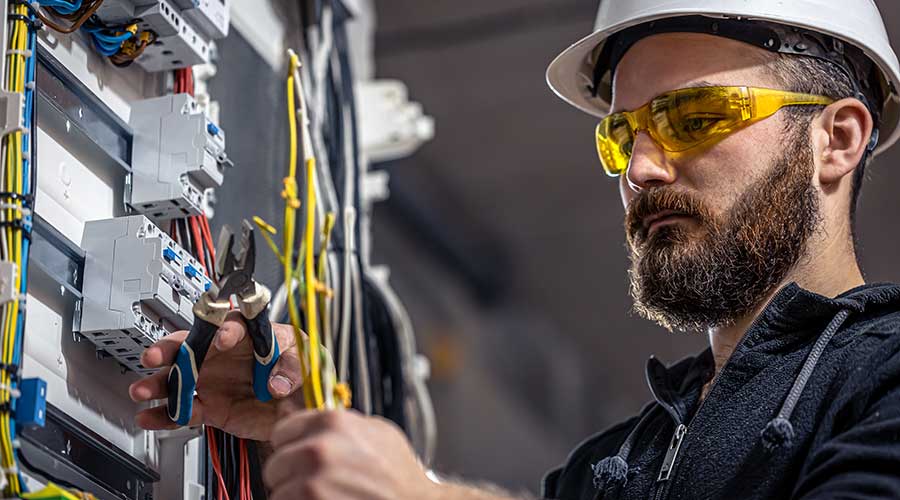In commercial and institutional facilities of all kinds, electrical systems need to perform. But the stakes are especially high in healthcare facilities. Consider all the building activities and processes that would not properly function if not for electrical updates, modifications and maintenance.
Imagine if the lights turned off in the operating room halfway through surgery or if the air conditioning shut down unexpectedly, leaving hundreds of at-risk patients exposed to untenable temperatures. Electrical disturbances not only cause chaos for healthcare facility managers. They can pose a major threat to patient care.
Prioritizing electrical maintenance to ensure a healthcare facility is up to date with code and standard changes is critical for promoting electrical safety related to patient care, as well as to inspection, testing and maintenance activities.
This is exactly what the latest recommended practice-turned-standard, NFPA 70B, Standard for Electrical Equipment Maintenance, hopes to instill among facility professionals. To make electrical equipment maintenance easier, NFPA 70B’s shift from a recommended practice to a standard provides more enforceable guidelines for what is required to maintain a safe electrical environment.
Spotlight on NFPA
One of the most important objectives of NFPA 70B is “to provide for the practical safeguarding of persons, property, and processes from the risks associated with failure, breakdown, or malfunction” of electrical equipment. The standard also aims to provide “a means to establish a condition of maintenance of electrical equipment and systems for safety and reliability.”
It is nearly impossible to keep up to date on all code and standard changes, which is the reason that using digital tools can be an invaluable approach to ensuring a healthcare facility aligns with the latest infrastructure protocols. Digital tools can be used for various use cases, including knowledge transfer, collaboration and visual aids.
Documenting knowledge transfer
After years of experience in any given field, the knowledge collected among teams can be great for training peers or onboarding new employees. But the intricacies of this role can require a great deal of time dedicated to sharing knowledge.
Digitized codes and standards store veteran employees’ knowledge to share with new employees, allowing them to democratize notes from previous projects, bookmarked items and curated collections for team members to study. This process can be incredibly helpful in getting team members up to speed on relevant requirements as they implement measures in the field.
Collaboration efforts
When new codes and standards are released, it is important to work collaboratively on unpacking the impact of requirements and understanding the way they apply to specific environments. Being able to share notes, highlights and other study materials is incredibly helpful for creating a collaborative learning process and unified understanding.
Digital tools also can enhance collaboration efforts with the ability to send specific sections of codes to internal and external team members via email, providing the opportunity to discuss different perspectives. Another benefit of this process is the ability to group those relevant requirements into collections or folders for specific projects that can be shared with relevant stakeholders.
Leveraging visual aspects
When written words fail, visual aids offer a deeper understanding for facility managers and their team members. Whether a simulation or static images, these aids help users better understand situations, rules, requirements and nuances related to specific codes in any aspect of a building.
For example, a visual aspect can show the different electrical elements of an operating room to help electricians understand which requirements are relevant, engaging and enhancing the project before anyone needs to actually step foot in the room.
The value of effective maintenance
Varying healthcare governing bodies — including state departments of health, the Centers for Medicare and Medicaid Services (CMS) and accreditation organizations — determine when and how codes should be implemented. But regardless of current requirements, healthcare facility managers should prepare for the requirements of NFPA 70B by developing an electrical maintenance program (EMP). An EMP helps identify impending issues and find solutions before they become major problems that require increased capital and time.
When developing an EMP, managers need to consider two key elements:
- Top management support, since the maintenance of electrical equipment in healthcare facilities can be a matter of life or death. Ensuring equipment is properly updated is crucial to keeping employees and patients safe.
- Awareness of maintenance costs, which fall into two categories: preventive maintenance and equipment failures and repairs. The more money a department spends on preventive maintenance, the less money it has to spend on new equipment and downtime.
The NFPA Standards Council’s decision to make NFPA 70B a standard is a key part in achieving electrical safety in every facility. Though it might take time for each jurisdiction to enforce the standard, individual organizations should consider how to implement any necessary changes to adhere to its provisions.
In an industry where lives are on the line, healthcare facility managers need the latest structures and electrical standards to properly do their jobs. By keeping up to date with changes in electrical requirements, developing an EPM program and staying close to the enforcement plans around NFPA 70B and other electrical standards, managers are well-positioned to ensure patient and technician safety.
Erik Hohengasser is the electrical technical lead for NFPA, directing and advancing the development of content and services that support NFPA products and stakeholders.

 Rethinking Strategies for Construction Success
Rethinking Strategies for Construction Success From Touchless to Total Performance: Healthcare Restroom Design Redefined
From Touchless to Total Performance: Healthcare Restroom Design Redefined New York State Approves $53M Construction Program at Niagara Falls Memorial Medical Center
New York State Approves $53M Construction Program at Niagara Falls Memorial Medical Center How Health Systems Are Rethinking Facilities Amid Margin Pressure
How Health Systems Are Rethinking Facilities Amid Margin Pressure Ground Broken on New Medical Office Building in Scottsdale, AZ
Ground Broken on New Medical Office Building in Scottsdale, AZ